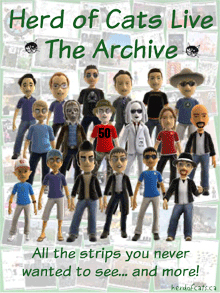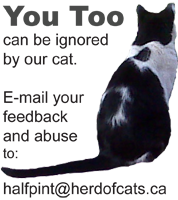You are hereProject Retirement, ep 8
Project Retirement, ep 8
The one where I spam the airwaves.
My uncle was an Amateur Radio operator since I was 12 years old. As a Ham, his tinkering with various hardware had him purchase a Commodore Business Machine (Hey, Stormblade, remember Commodore ?? Ha!). That CBM was the first computer I touched; and you could not pull me away from it. That event ended up defining my career. His shack was full of gadgets and radios, and I wanted to touch all of it. But, no license, no touchy. At 13 years of age, I studied to get my own Amateur Radio license, and passed the written exam, but in those days, any Ham had to also pass the dreaded morse-code exam, regardless of age. I just could not; dits and dahs just could not line up properly in my brain. Life went on.
The morse-code part is no longer mandatory. COVID is here and I'm bored, and now I am planning retirement and I want to sail around the world. Turns out, for sailing, communication is very expensive. Ham radio provides email capability around the world for free. Mind you, Amateur Radio, like sailing, can also be an expensive hobby, oh joy.
I started my self study at the beginning of 2020, around March last year. I spent about an hour 3 times per week in evenings on studying the CLARES website http://www.clares.ca/self/ . It's not an easy subject, and it's not an easy exam. You must study regulations, policies, operations, hardware, basic electronics, RF safety, and wave propagation. I would estimate that it took me a solid 80 hours of studying, and this is with some good electronics knowledge already acquired.
The more you score, the more "bands" you are allowed to transmit on. There are many bands, generally divided into High Frequencies (HF), Very-High Frequencies (VHF), and Ultra-High Frequencies (UHF). The lower the frequency, the farther your transmission goes; and I mean *farther*... With the right conditions, an HF frequency can reach Japan from Ottawa. A UHF radio can usually reach less than a kilometre. So, if you incorrectly use a UHF radio, you will piss off Ham operators in your general area; if you incorrectly use an HF radio, you will piss off Ham operators world-wide (potentially). You must have 80% or better in your Ham exam to be certified to transmit on the HF bands.
I passed my Ham exam with honours on September 23, 2020. I can transmit on all Ham bands.
I bought my first radio even before getting my license. I just didn't transmit. But I did listen a lot. This radio was a TYT-UV88; a small hand-held VHF radio. That radio permits me to listen to the 2-meter band and I can reach anyone within my line-of-sight, which is roughly Buckingham to Orleans to Kanata; I am based downtown Ottawa.
I wanted to try to send and receive emails via the airwaves immediately. Generally, the digital aspects of Ham radio interest me: email, positioning reporting, low-power-long-distance communications, digital emergency communications, etc... The TYT-UV88 is not a digital-capable radio. So in comes the Mobilinkd, a nice little gadget that is basically a miniature raspberry pi computer that measures about 1/3 of an SSD drive. It connects to the UV88 via an audio cable, and it sends a Bluetooth signal to any computer that binds with it. That lets the Mobilinkd present a COM port to the PC, and then the correct software enables to send out text data via VHF. Remember the good 'ol BBS days ? Well the Mobilinkd acts just like a modem, and there are still some BBS systems out there (even in the Ottawa region) that will listen on a VHF frequency and answer connections, just like we used to do with dialup modems.
I will explain WInlink in more details in a future episode.
I have been told that any Amateur Radio operator will spend any available funds on radios. That seemed laughable to me. How many radios would you *need* ? Turns out, the answer is "one". The problem is really "how many radios would you *want* ?" Turns out, the answer is "many".
So, I purchased my second radio soon after. This time I wanted to experiment with digital modes without needing the Mobilinkd adapter. The Kenwood radio permitted me to experiment with APRS, and packet radio gateway, such as the packet-radio-to-SMS gateway and packet-radio-to-weather-report gateway. I also wanted to bounce APRS packets off of the International Space Station, if I could swing that.
I will explain APRS in a future episode.
So, now I had two VHF radios, one capable of doing Digital Voice without an adapter. That was awesome for reaching the local Amateur Radio operators, but what about the rest of the world ? I wasn't ready to blow thousands of dollars on HF equipment just yet. My next purchase was a "Digital Voice gateway": basically another Raspberry Pi with a small antenna attached to it, listening on VHF for a Digital Voice signal and connected to your home Internet. With it, I can use my Kenwood to reach through the internet and talk to other Digital Voice capable radios also running a Digital Voice Gateway at home. We meet in radio chat rooms called "reflectors". There are hundreds of these reflectors. That opened up an extremely large group of like-minded people to chat with. That little DV gateway I have at home uses extremely low power to transmit, so my Kenwood can reach it in the apartment, but not if I go outside. The gateway is also the size of very small remote control.
"But why use the Internet to talk to people through a RADIO ??" That's a good point, and older Radio Amateur consider these DV gateway to be "missing the point", while others remember that being a Ham is all about experimentation and goofing around with technology.
Personally, I want to learn about all things digital, and Digital Voice is part of that.
My next step is to learn the world of HF radio. So I finally coughed up the funds necessary to get a good HF radio and an antenna that would actually fit in my apartment. HF antennas are a minimum of 10 meters long. That's bigger than my apartment, and I am not permitted to just dangle a wire off my balcony. Only one antenna can save me: a "loop antenna". It's a large circle, roughly 1 meter in diameter, that can be folded for easy storage under the couch. It's perfect for my situation but it is the most "finicky" of antennas, needing to be tuned via a knob on the side every time I change frequency on the radio; and you need to do that *a lot*. It was a compromise I was ready to do. That 1 meter circle can do a lot... I have been able to hear communications from Costa Rica, Japan, Croatia, Romania, France, the UK, and the west coast of Canada and the US. The solar storms decide how far the waves will travel and bounce off of the atmosphere. The more solar flare activity, the farther you will be able to reach. We happen to be in the low period of a 11-year solar cycle, so your mileage will definitely vary. To be fair, it is extremely difficult to be heard on the radio waves from inside my apartment as my building skeleton is very good at absorbing any kind of waves I try to send out. I have been heard by certain parts of central US, and parts of the Maritimes; and that's mostly it.
I have been stuck inside for all of winter, and this spring will see me head to the Gatineau hills to setup temporary thin antennas to try to reach the rest of this planet for shits and giggles.
That's the point.
Hardware that I have now:
TYT-UV88 (5W radio)
Kenwood TH-D74 (5W radio) Can do APRS, Digital voice, GPS integrated, receive HF bands.
iCom IC-705 (5W and 10W radio) Can do pretty much everything except send out APRS by itself.
Mobilinkd
AlexLoop antenna
DV gateway
-

- Login to post comments
- 51 reads







